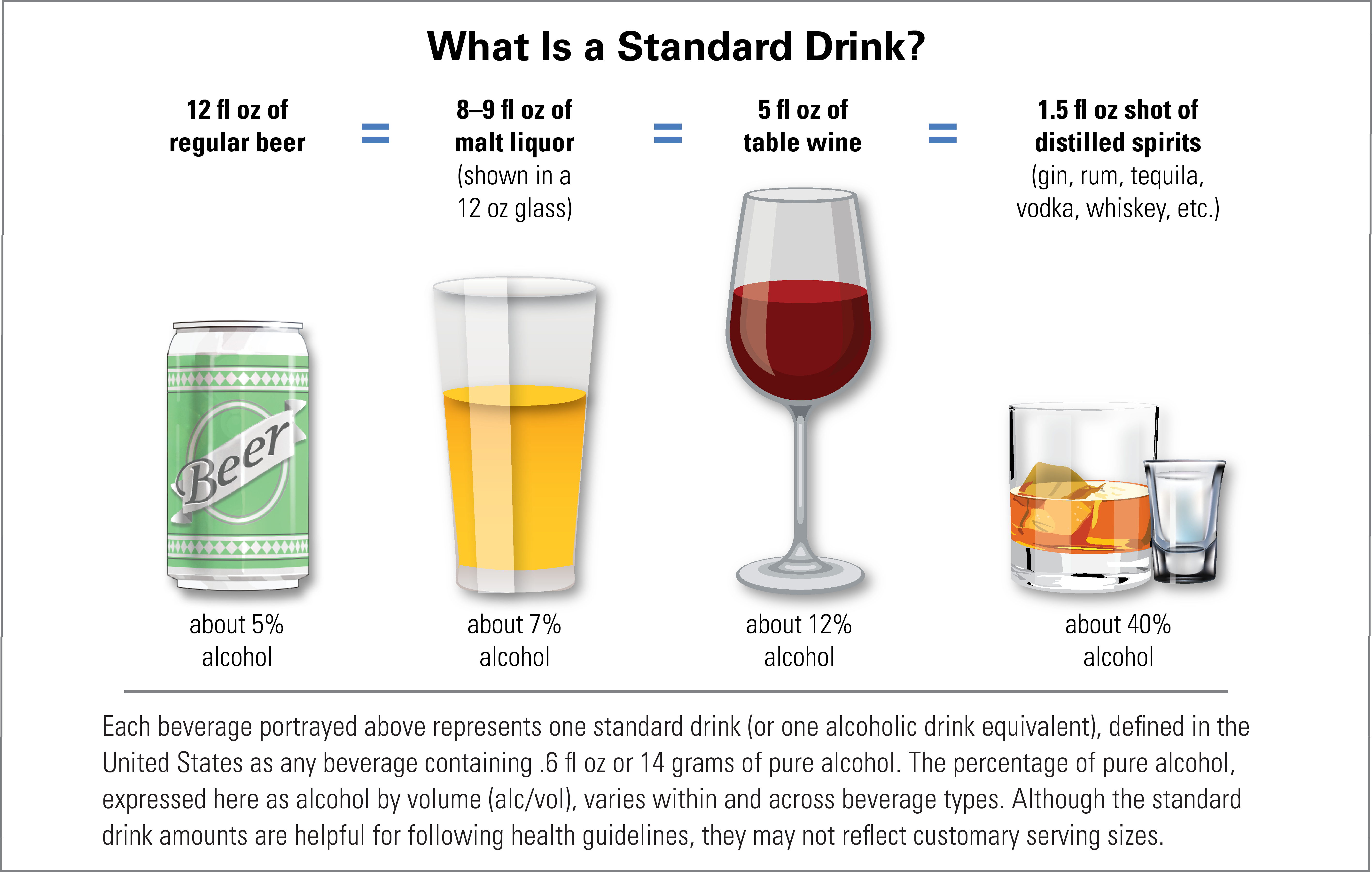13.1 – Introduction to Alcohol
Alcohol is both a beverage providing some sustenance and a drug. For thousands of years, alcohol has been consumed in a medicinal, celebratory, and ritualistic manner. It is drunk in just about every country and often in excessive amounts. Alcohol can be made from a variety of different starch foods through the processes called fermentation. Fermentation of starchy food such as barley or wheat can produce ethanol and CO2 which makes up what is commonly known as beer. The Native Hawaiians distilled a mash of fermented ti roots in iron try-pots pre-colonization in the 1700s. This form of alcohol was called “Okolehao”. This alcoholic beverage is more commonly known today as “moonshine”, is still made locally in the islands today.1Alcohol is a psychoactive drug. A psychoactive drug is any substance that crosses the blood-brain barrier primarily affecting the functioning of the brain, be it altering mood, thinking, memory, motor control, or behavior. Alcohols in chemistry refer to a group of similar organic compounds, but in beverages the only alcohol consumed is ethanol.
The Behavioral Risk Factor Surveillance System survey reported that more than half of the adult US population drank alcohol in the past thirty days.2 Of the total population who drank alcohol, approximately 5 percent drank heavily, while 15 percent binge drank. Binge drinking (as defined by the National Institute on Alcohol Abuse and Alcoholism) is when men consume five or more drinks, and when women consume four or more drinks, in two hours or less.3
Alcohol in excess is detrimental to health; however, since its beginnings, it has been suspected and promoted as a benefit to the body and mind when consumed in moderation. In the United States, the Dietary Guidelines define moderate alcohol intake as no more than one drink per day for women and no more than two drinks per day for men.4 Although drunkenness has pervaded many cultures, drinking in moderation has long been a mantra of multiple cultures with access to alcohol.
More than 90 percent of ingested alcohol is metabolized in the liver. The remaining amount stays in the blood and is eventually excreted through the breath (which is how Breathalyzers work), urine, saliva, and sweat. The blood alcohol concentration (BAC) is measured in milligrams percent, comparing units of alcohol to units of blood. BAC is a measurement used legally to assess intoxication and the impairment and ability to perform certain activities, as in driving a car. As a general rule, the liver can metabolize one standard drink (defined as 12 ounces of beer, 5 ounces of wine, or 1 ½ ounce of hard liquor) per hour. In the United States, a standard drink is any drink that contains about 0.6 fluid ounces or 14 grams of pure alcohol (also known as an alcoholic drink-equivalent).5 Drinking more than this, or more quickly, will cause BAC to rise to potentially unsafe levels. Table 13.1.1 summarizes the mental and physical effects associated with different BAC levels.

Figure 13.1.1 What is a Standard Drink? National Institute on Alcohol Abuse and Alcoholism Accessed July 4, 2019.
1Will Hoover. Will New ‘Okolehao be your cup of Ti?. Honolulu Advertiser.com Honolulu Advertiser. Published June 1, 2003. Accessed June 7, 2019.
2,3Alcohol and Public Health. Centers for Disease Control and Prevention. CDC Alcohol Abuse. Accessed June 7, 2019.
4Dietary Guidelines 2015-2020. Appendix 9. Alcohol. Accessed June 7, 2019.
5 NIAAA: How much is too much? What counts as a drink? Whats A Standard Drink? Accessed July 4, 2019.
Table 13.1.1: Mental and Physical Effects of Different BAC Levels.
| BAC Percent | Typical Effects |
|---|---|
| 0.02 | Some loss of judgment, altered mood, relaxation, increased body warmth |
| 0.05 | Exaggerated behavior, impaired judgment, may have some loss of muscle control (focusing eyes), usually good feeling, lowered alertness, the release of inhibition |
| 0.08 | Poor muscle coordination (balance, speech, vision, reaction time), difficulty detecting danger, and impaired judgment, self-control, reasoning, and memory |
| 0.10 | Clear deterioration of muscle control and reaction time, slurred speech, poor coordination, slowed thinking |
| 0.15 | Far less muscle control than normal, major loss of balance, vomiting |
In addition to the one drink per hour guideline, the rate at which an individual’s BAC rises is affected by the following factors:
- Sex (A woman’s BAC will rise more quickly than a man’s.)
- Weight (BAC will rise more slowly for heavier people.)
- Genetics
- Length of time as a heavy drinker
- Type of alcohol consumed
- Amount of alcohol consumed
- Consumption rate
- Consumption before or after a meal (food in the stomach slows absorption)
- Mixture (carbonated mixers speed absorption)
- Medications may increase the bioavailability of alcohol

